Advertisement
Here's how to add a pre-engineered system to your boat's engine room.
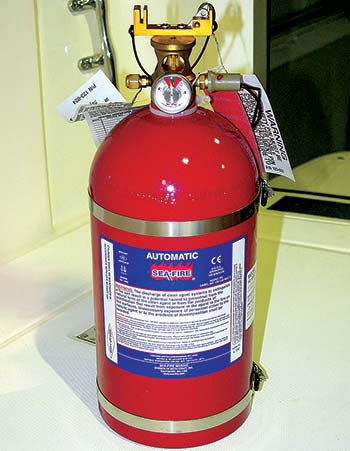
An automatic fire extinguisher system installed in your boat's
engine compartment offers an additional layer of safety.
Installing an automatic fire extinguisher in the engine room is well within the capabilities of a competent DIY owner, but it is necessary to do a little research first. I contacted Sea-Fire, which supplied me with the necessary parts to complete the installation that you see here after sending me a worksheet that asked some questions about the boat, engine size, location, and, most important, the size of the space that the system would protect.
Instead of just adding a sprinkler head at the top of the extinguisher cylinder, which bursts at a certain temperature and smothers the fire, I added a cable release to the top of the cylinder, controlled by a handle next to the helm that can be pulled to deploy the extinguishing agent manually. Because the boat I was installing this on had a large electronically controlled engine, I also installed an automatic shutdown system.
Technical Support
Difficulty: Moderate to advanced
Tools and Materials:- Drill & bits
- Hole saw
- Screwdrivers
- Pliers
- Tape measure
- Crimpers
- Wrenches
- Fire-suppression system
- Manual release cable
- Wire of correct gauge
Time: A full day, depending on the boat and system
Cost: Starting around $300, depending on system
1. Decide where the extinguisher will go. In many cases the decision is made for you as there is not much space in the average engine room. Bear in mind that you will have to make a connection to the top of the cylinder and that, depending on the type of system you have, the cylinder will either need to be mounted horizontally or vertically. This will be made clear in the installation instructions. Install cylinders and controls so they are protected from weather and mechanical damage. Cylinders must be securely mounted and accessible for maintenance (i.e., removal for weighing, inspection).

2. Measure carefully, then bolt the mounting bracket into position. I had a clear space on the aft bulkhead that was ideal. You may have to reroute wires or hoses if they are in the way.
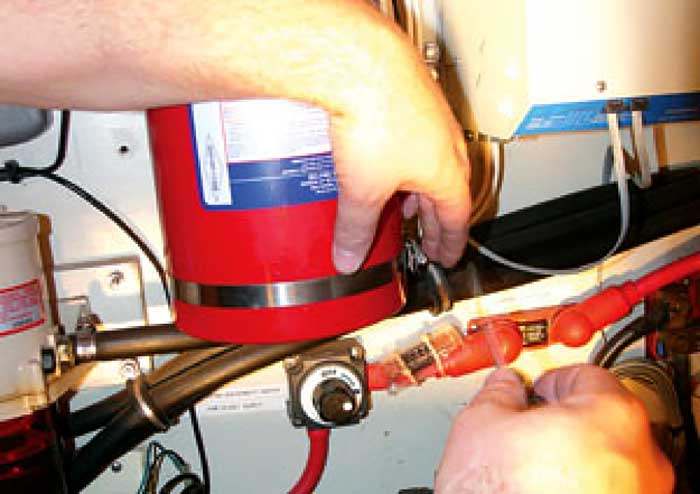
3. Mount the extinguisher as outlined in the instructions. This Sea-Fire has stainless steel worm-drive clips that pass through the bracket and around the cylinder. Make sure they are tight.
4. (Not pictured) Install the manual release cable. Bear in mind that it is stiff, like a throttle or gear shift cable, and will not bend in a tight radius. Cables are supplied in almost any length, so measure the run of the cable before ordering. An old piece of 6mm 1-by-19 rigging wire is handy for this, as it has the same bend characteristics as the release cable.
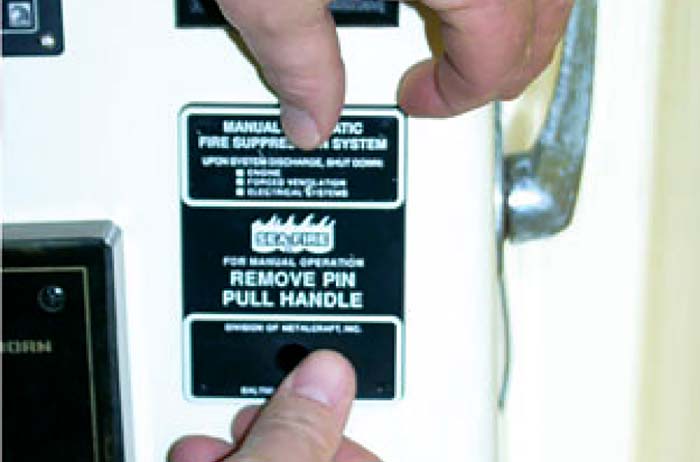
5. After deciding where the cable will go, install the plate for the manual release, which should be near the helm. You will also need to drill a hole for the cable attachment. I was lucky to be able to use the plate to cover an unwanted hole where a gauge used to be mounted.
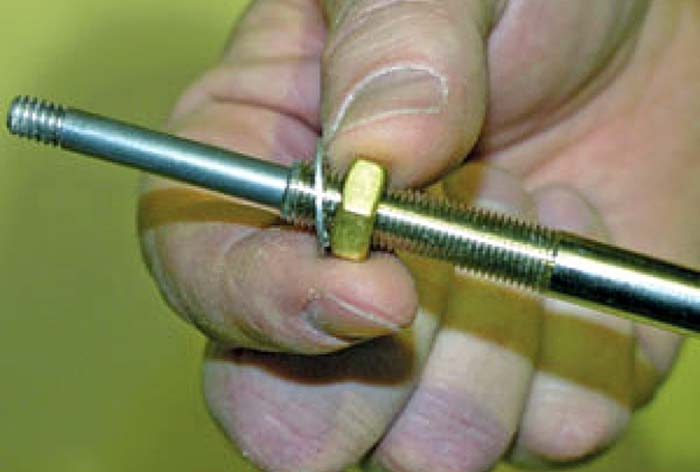
6. Install the brass nut and washer before passing the end of the cable through the hole.
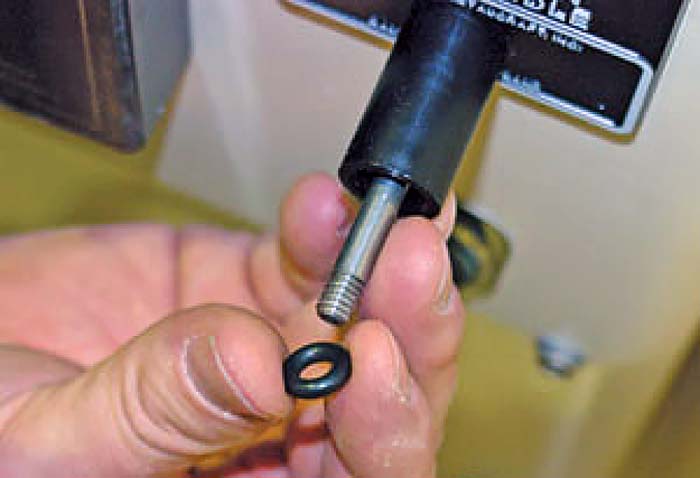
7. Install the other components on the other side: barrel nut, O-ring, T-handle, and safety clip. Connect the other end of the cable to the cylinder, which is retained by a spring clip. It is also worth noting that the cylinder has a safety pin that has to be removed, but leave that until you have completed the installation to avoid a possible accidental discharge.
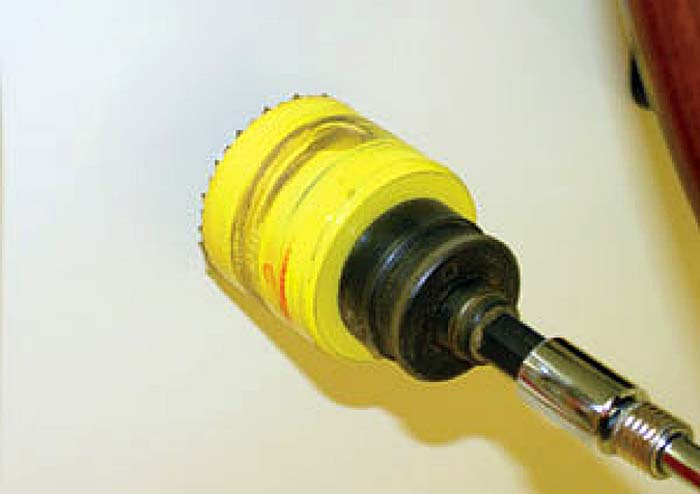
8. Use a hole saw to drill a mounting hole for the monitor panel.
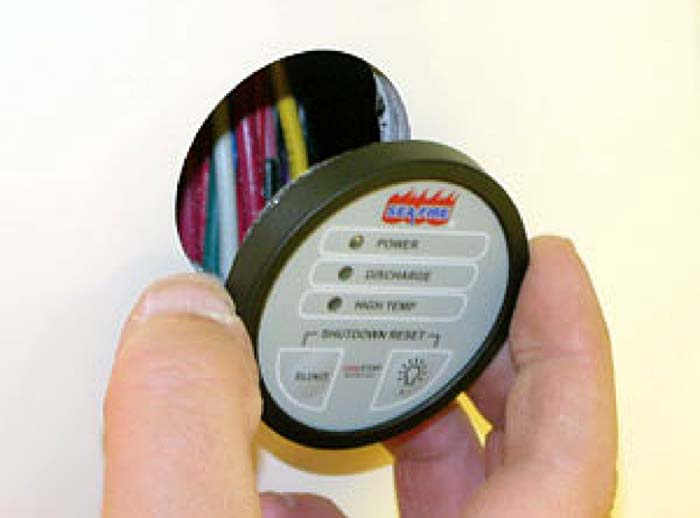
9. Pass the panel through the hole and secure with the straddle clip on the back.

10. Wiring will likely be the most time-consuming part of the job to keep it neat and orderly. First, mount the relay/control box. I put mine behind the breaker panel. Use cable of the correct gauge; Sea-Fire recommends no smaller than 16 AWG. The wiring is fairly easy to follow but requires connections from the top of the cylinder, a power feed, and connections to the electrical engine shutdown solenoid. When connecting a shutdown solenoid, the contacts will either be normally open or normally closed. You may need to refer to the engine wiring diagram to identify your specific application and know which wire you need to splice into.
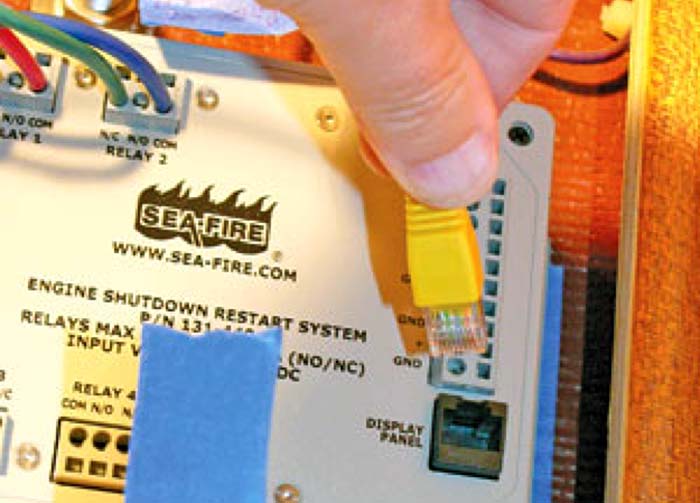
11. Install the ethernet cable between the monitor panel and control box.
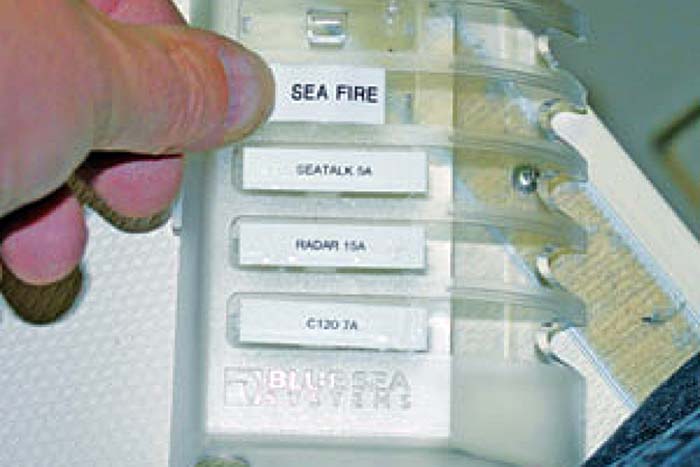
12. Make the power connections to the fuse box, which must be protected with the correct amperage fuse. Remember to mark the fuse for identification later. Finally, clip back the cables for a neat and orderly appearance.
With thanks to Brewer South Freeport and Matt Durkin.
